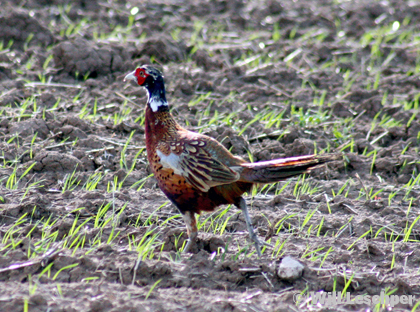Pheasant hunting is a rite of passage for most hunters in the Rolling Plains and Panhandle of Texas, which feature the only huntable population in the state for these ornate birds.
However, even if you don’t call those places home, it’s still worth the trip to experience one of the true wild thrills left in Texas hunting. This year’s pheasant framework runs Dec. 7 to Jan. 5, offering five full weekends to chase after the birds, and with increased possession limits, hunters can now make a long weekend of it and bring back more of the prized quarry.
Shooting your limit of roosters shouldn’t be your singular intention. For pheasant hunters, it’s the quality of the experience, not the quantity in the hand.
Perhaps it’s that first bird that rises against the glowing eastern horizon, its kaleidoscope of plumage glistening in the brilliant light as it barks out resonating cackles in haste. Maybe it’s the sight of a pair of well-trained bird dogs nosing through stubble and vegetation looking for their own magic moment. Or it could just be the beaming smiles of old friends and new ones as you partake in a tradition as old as anyone can remember.
With that in mind, here’s a look at things to remember whether you’re hunting your 50th season or your first.
Target thick cover: Look for the heaviest vegetation near food and water sources where applicable, including areas that would discourage some hunters, and you’ll find birds. One of the greatest opening-morning pheasant outings I’ve been on took place in an overgrown, abandoned feedlot near Gruver. There were poles and fences, which hindered moving quickly through the area, but there probably were a couple of hundred birds hanging out in a roughly 10-acre area, which made for some wild action. Tailwater pits and stubble adjacent to lands still in the Conservation Reserve Program are examples of places to target that almost always can hold birds.

Work slowly: Early in the season, pheasants won’t hold as tightly, but some still will hide out rather than take flight, and by moving slower through an area, you’ll often make birds nervous. Pheasants would much rather not go airborne to avoid oncoming threats, but many times I’ve seen hunters and dogs simply miss wary roosters because they walked right over them. It still amazes me how such a brilliantly colored bird can hide at all, but they do and do it well.
Work into the wind: This will give dogs better scent patterns and will make for easier shots as pheasants almost always flush and fly with the breeze. This is a good strategy if you aren’t working with canines, but if you are it simply makes it easier for them to locate birds, especially on colder days when it’s easier for dogs to work and also pick up scent easier.
Pick only safe shots: Know where your drivers, blockers and dogs are at all times, and if you have any concerns, don’t shoot. On that same opening hunt in Gruver some years back, a fellow an acquaintance invited at the last minute peppered a good family friend in the face who was blocking the end of the field because he didn’t check his background before squeezing the trigger on a fluttering rooster. On some hunts, a line of hunters quickly can become condensed, especially if a field narrows near the end of a walk, and it’s always the best policy to keep the muzzle clear and pointed straight up. When it comes to dogs, they almost always come into and out of view if they’re working thick stuff, so don’t expect only pheasants to pop out of vegetation at any moment.
Be quiet: Don’t slam doors or talk loudly when preparing to hunt an area. It’s the easiest way to alert birds to your presence and send them running. On another opening morning hunt in a past season, the caravan of pickups and SUVs stopped near a hot spot at first light and everyone piled out and commenced to cutting up and talking about how cold it was while also banging around in a search to find more clothing and other gear. The happy mood quickly changed when everyone noticed dozens of birds busting cover in the distance and loafing toward the horizon and the end of the field where blockers hadn’t had a chance to set up.
Stick with it: It generally is agreed that the first hour and last hour of daylight are the best times to hunt pheasants since they are more apt to be near food sources, but the birds are still around during the middle of the day. You just have to target areas where they head to and hunker down after feeding.
Stay legal: It’s illegal to possess pheasants with proof of sex removed until you reach your final destination, which means leaving a leg including the spur or the entire plumage attached to the carcass. It also is unlawful to hunt by the aid of dragging of a cable, chain, rope or other device connected to or between a moving object or objects. The daily bag limit is three roosters, while hen pheasants may not be harvested.
Plenty of opportunities: Many hunters will only hunt opening weekend, but if you’re looking to hunt later, contact the Chamber of Commerce in almost any town in the Rolling Plains and Panhandle, and they more than likely will be able to hook you up with someplace to hunt unless you prefer going through an outfitter or a landowner. You also can search public leases through Texas Parks and Wildlife, which will have less pressure later on.
If you could pick five towns to target this winter, you’d be hard-pressed to find more hospitable folks and conditions than those in Stratford (“Pheasant Capital of Texas”), Gruver, Olton, Spearman and Hart. Those areas offer an opening weekend hunt and feed put on by the local Chambers of Commerce.



















